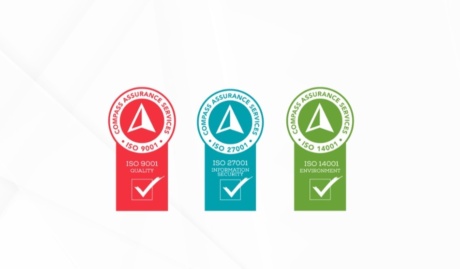The last few years have brought technology to the top of the business agenda in a way that only a global pandemic could. Despite this unprecedented focus on information technology, and the frantic pace of change to keep up, there has been relatively little attention on true innovation. From our perspective, working with medium-sized Australian businesses, it appears that most spending has instead been concerned with paying back technological debt accumulated over years of under-investment.
The dual demands of a suddenly remote workforce and a rapidly escalating cyber-security war have knocked the wind out of many organisations, forcing them to urgently defend ground rather than seek competitive advantage. The hard learnt lesson for many is that outdated technology and business processes can rapidly flip from hard-worked assets to existential threats.
With the challenges of the pandemic slowly receding, it’s time to shift our attention to the future. To not only take stock and ensure that we have the foundations in place for success and growth but to consider some of the exciting opportunities that lie ahead.
Read on for three technology trends to watch in 2023.
Artificial Intelligence goes mainstream
For what feels like forever, we’ve been hearing the competing voices of AI proponents and detractors both promising very different, but equally startling, futures. On one hand, blissful hyper-productivity; on the other, apocalyptic job losses and societal decay. Neither prediction has come to pass. Indeed, if the utility of Apple’s Siri is anything to go by, we’re safe from any real disruption from artificial intelligence for the foreseeable future.
The fact is that we all benefit from AI every day. Every time you unlock your iPhone with face ID, scroll through a social media feed or trust your bank’s fraud detection systems, artificial intelligence is doing the heavy lifting behind the scenes.
So why will 2023 be the year of artificial intelligence? Quite simply because we have reached a tipping point. Indeed, that tipping point was reached on 30 November 2022 when OpenAI released ChatGPT and captured the popular imagination with their impressive AI chatbot. Not only are non-technical users finding ever more creative, useful and disruptive ways of using ChatGPT, but even Google has taken notice, reportedly concerned about the threat AI poses to its core search engine business.
This year we expect to see continuing strong uptake of existing applications and services built on AI (see below for more). More interestingly though we expect to see mid-sized organisations begin to experiment with integrating AI into existing applications and business processes using services such as Power Automate, ChatGPT and Azure AI.
Further reading:
- ChatGPT – Try it for yourself.
- Creating an effective AI strategy – A collection of resources to support business leaders through their AI journey.
- How to design an AI marketing strategy – Primarily concerned with the application of AI in marketing, but the authors present a framework that is equally applicable to any other department.
Existing AI-based applications to explore:
- Automatically import bills, receipts & invoices into your accounting system with Hubdoc or Dext.
- Audit your accounts for bookkeeping issues in real time with XBert.
- Create sales & marketing copy with Jasper.
- Write clear, powerful communication with Grammarly.
- Integrate AI into your existing applications & business processes with Azure AI.
Business Process Automation gains traction
Curiously enough small and micro-businesses have historically embraced opportunities to automate business processes more readily than their mid-sized counterparts. Larger organisations often seem content to maintain the status quo and simply spend more human labour on a task rather than applying technology and automation. To be fair though, smaller organisations don’t usually have to deal with legacy systems or the greater cost of change that can come with larger scale, and the price of failure can be higher.
2023 however is shaping up to be different for two reasons. First, the cost of labour continues to rapidly increase. Blame it on inflation, the great resignation, or any number of other reasons; the fact remains that employment costs, from recruitment through to retention, show no sign of easing any time soon.
The second factor is that the pandemic provided organisations with an unprecedented ‘burning platform’ opportunity, allowing them to shake off legacy technology and work practices in favour of modern cloud platforms, in the process putting automation far more within reach.
Here are some things that we expect to see accelerate over the next 12 months.
- Organisations doubling down on their commitment to a single platform such as Microsoft 365, to take advantage of built-in process automation opportunities.
- Increased adoption of no-code tools such as PowerApps to build custom internal apps rapidly.
- Integration of Robotic Process Automation and Artificial Intelligence to automate existing legacy systems.
Cybersecurity
OK stay with me on this one. We’ve been talking about cybersecurity for years now, and for good reason. If there’s one thing that has the potential to destroy an otherwise great company, it’s a security breach. So, what’s changed to put cybersecurity on the map (again) for 2023?
Put simply, various factors are coming together to drive home the point that security is no longer just an IT problem. In fact, those organisations that continue to treat it as an IT problem are going to find themselves hitting more and more obstacles to doing business.
For starters, many contracts are starting to require a compulsory level of security compliance, and even cyber-insurance, from all parties. Not compliant with at least Essential Eight level one? Your sales team’s going to be cranky when they get disqualified from that big deal because of it.
Speaking of cyber-insurance, not only are premiums rapidly increasing but simply complying with policy requirements is becoming far more difficult. We’ve spoken with several organisations in recent months who are simply unable to obtain cyber-insurance at any price, due to their existing security posture. Some experts are even predicting that cyber threats will ultimately become un-insurable.
And of course, let’s not forget that the weakest link in any defence is always the people. The more we impose security restrictions on staff, the more likely they are to find ways to circumvent them, so the more we need to train them on the importance of cybersecurity, and so on it goes.
In short, thanks to the rapidly escalating threats facing all organisations, there is no longer any doubt that cybersecurity is now a board-level issue, and any business that treats it as anything less will very quickly be forced to deal with the consequences.
Further reading:
- The biggest data breaches of 2022 – Including some big Australian names such as Optus, Medibank and Bunnings.
- Aussie businesses increase cyber spending in 2023 – Business leaders are committing to greater spending on cybersecurity following recent high profile security breaches at Optus & Medibank.
- Key questions for an organisation’s board of directors – The Australian Investment & Securities Commission has compiled a list of key questions for board members to consider.
- Cybersecurity tips for CEO’s – 5 actionable steps for CEOs.
- The Essential 8 – An actionable framework promoted by the Australian Government for mitigating cyber security incidents. +
Summary
2023 is shaping up to be an exciting year, with a number of medium-term trends gaining traction. We can expect to see more mainstream adoption of these technologies as they mature past the high-risk early adoption stage and the costs of successful implementation rapidly decrease. To talk about how your organisation can see around corners and take advantage of these trends in 2023, contact us today.


























